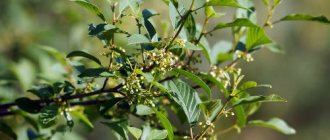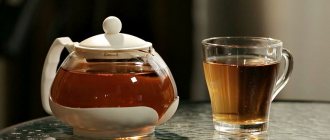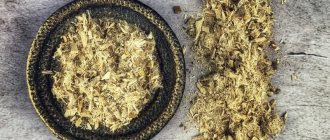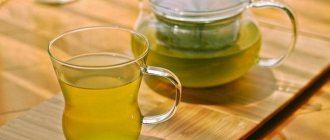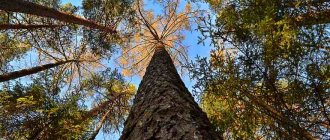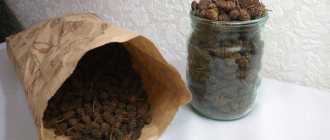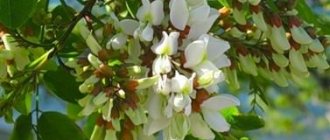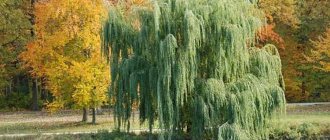Types of buckthorn, classification
The plant is popularly known as crow's eye (due to the black color of the fruit) and wolf berries. The shrub grows in Crimea, the northern part of Kazakhstan and Western Siberia. The plant is also found in the western part of Russia. Buckthorn is not afraid of shade and grows well near swamps, cold lakes and rivers.
Buckthorn is distinguished by its species diversity (there are more than 150 species): from small spreading shrubs to trees 7 m high.
For medicinal purposes, mainly 3 types are used:
- alder (Frangula alnus): dark brown branches, round leaves, reddish fruits;
- zhoster (Rhamnus cathartica): tree with a twisted trunk up to 7.5 m high, black bark, dark purple fruits;
- American species or cascara (Frangula purshiana): low shrub, fruits ripen in clusters, black in color.
Composition of buckthorn bark
Buckthorn bark is famous for its beneficial properties and the virtual absence of contraindications. In the preparation of decoctions, last year's raw materials are used, since freshly harvested bark contains fragularoside, which provokes vomiting. When interacting with oxygen, the substance oxidizes and becomes safe.
The shrub is rich in the following substances:
- macroelements;
- gum;
- alkaloids;
- anthraglycosides;
- saponizides;
- ash;
- essential oils;
- pectin;
- organic acids;
- tannins;
- flavonoids;
- vitamin C.
The elements in combination have a positive effect on the body:
- reduce cholesterol levels;
- destroy bacteria;
- help reduce pain.
Medicinal properties of buckthorn bark
Freshly harvested bark contains the glycoside franguloriside in maximum concentration.
During drying and further storage of raw materials, this substance is oxidized and converted into frangulin.
A more gentle element for the gastrointestinal tract, which becomes passive when it enters the stomach and moves with food to the large intestine. And:
- essential oils are bioregulators of all body systems;
- tannins have anti-inflammatory, astringent, bactericidal effects;
- malic and succinic acids. Cleanse the body and restore the acid-base balance, stimulate the immune system;
- chrysophanic acid - stimulates the release of electrolytes and water into the intestines;
- vitamin C - strengthens the body's defenses;
- alkaloids - have analgesic properties.
We recommend reading: Beneficial properties of thyme for men and women
A set of useful microelements allows you to use buckthorn bark for constipation, when the abdominal muscles are poorly developed. The positive thing about the bark is its prolonged action and buckthorn only works in the intestines.
Absorption slows down here, which contributes to weight gain. As a result, fecal contents will be released from the intestines. They, in turn, are further liquefied.
Complex therapy using buckthorn bark is used to treat stomach ulcers, hemorrhoids, and duodenum.
For weight loss and against worms, preparations containing buckthorn are used. Taking baths with a decoction helps get rid of scabies. When applied externally, bark tinctures help improve the healing of eczema on the skin.
In gynecology, the bark is used during the postpartum period to soften stool. During menopause, women take herbal teas with buckthorn.
In cosmetology, decoctions help get rid of acne, rejuvenate the skin, and relieve inflammation. Buckthorn bark acts as a natural hair coloring agent.
The anti-inflammatory and pathogenic properties of the bark can remove sand and salt from the kidneys.
Medicinal properties
People often used buckthorn as an antiviral, laxative and antispasmodic. It helps remove toxins from the body and strengthen the nervous system.
These qualities give the plant its unique chemical composition:
| flavonoids | increase the elasticity of blood vessels |
| pectin | normalizes intestinal activity and metabolism |
| tannids | eliminate irritants, fight paratyphoid bacilli |
| anthraglycosides | increase intestinal muscle tone, have a laxative effect |
| organic acids | improve digestion, remove harmful substances |
| alkaloids | reduce blood pressure, improve blood circulation |
| ash | dissolves blood clots, improves blood circulation |
| gum | reduce appetite and blood cholesterol levels |
Therapeutic effect
Buckthorn bark, the medicinal properties of which are clearly expressed in providing a healing effect on the body, is widely used in traditional and folk medicine.
Has the following actions:
- Laxative. Its main feature is that it begins to act exclusively in the large intestine by slowing down absorption. There is an increase in the volume of internal contents, which promotes bowel movements. In this case, there is an additional effect: softening of the stool, which makes excretion easier. It has a long period of action, the result is achieved after 8 hours. It is widely used for long-term constipation arising from poor development of the peritoneal muscles and an immobile lifestyle. This property is taken into account in the treatment of cracks in the rectum, eliminating the symptoms of hemorrhoids and other diseases accompanied by traumatic painful bowel movements.
- It has found application in the gynecological field , in particular, it is used in the postpartum period to soften the release of the intestines from feces. It is also included in a complex of means to achieve the effect of weight loss and helps rid the body of toxins.
- Anti-inflammatory and diaphoretic.
- Cleansing. Able to eliminate sand and salt deposits from the kidneys, toxins from the intestines and liver.
- Antihelminthic. Included in a mixture of anthelmintic preparations.
- Healing. Used for scabies, wipe areas affected by eczema.
- Antibacterial and antiseptic. Alcohol tincture is used to treat streptoderma, furunculosis, carbuncles and other skin diseases.
The figure lists the medicinal properties of buckthorn bark.
Despite all the positive aspects, it is worth remembering that the plant must be consumed in accordance with prescribed doses, as it has some toxicity. Exceeding the dosage negatively affects health, causes nausea, vomiting, and accumulation of toxic substances causing poisoning occurs.
Indications for use for adults, children
Buckthorn (bark, whose beneficial properties and contraindications differ for adults and children, contains many useful elements) is characterized by a unique composition. Taking decoctions is not recommended for children under 5-6 years of age. Afterwards, you need to take infusions in small doses and monitor the body’s reaction. If abdominal pain or skin irritation occurs, use should be discontinued.
Decoctions are good for adults with intestinal problems, liver problems and colds.
Buckthorn is most often used for difficult bowel movements, but it also helps with:
- pathologies of blood vessels and heart;
- gastritis;
- ascites;
- arthritis;
- joint diseases;
- osteochondrosis;
- intestinal atony;
- respiratory diseases.
When taking decoctions, the urine becomes brown. You shouldn’t be afraid of this - chrysophanic acid gives the color.
For external use, alcohol tinctures are used. They become an effective remedy for osteochondrosis, arthritis and rheumatism. Infusions are good for skin diseases: boils and purulent wounds.
Uses of buckthorn bark
The main pharmacological property of the plant bark is a laxative effect, therefore it is used to treat chronic constipation and is used as an aid in the fight against excess weight. Traditional medicine recommends the use of bark decoction for the following diseases and conditions:
- diseases of the kidneys, urinary tract (urolithiasis, colic);
- gout;
- intestinal atony;
- nervous disorders, hormonal imbalance during menopause;
- skin diseases (dermatitis, eczema, scabies);
- heart failure, other disorders of the cardiovascular system;
- diseases of the digestive system;
- hemorrhoids at any stage of development.
Treatment is carried out using different dosage forms. Infusions or decoctions, a forty-degree alcohol tincture are prepared from dried plant materials, less often it is recommended to use dried berries or powder based on them, and even less often - juice from fresh berries (due to the high risk of side effects and poisoning in case of overdose). In pharmacies you can buy tablets, bark extract, buckthorn berry syrup or powder in special filter bags for brewing.
You can prepare a medicinal product based on herbal raw materials (prepared yourself or purchased) at home, according to one of the following recipes:
- Infusion of dried berries. Pour 10 g of dried berries with a glass of boiling water and leave for 8 hours. To prepare the syrup, the finished infusion is mixed with sugar in equal parts.
- Bark decoction. Pour 20 g of crushed dried plant material into 450 ml of cold water, simmer over low heat for 25-30 minutes.
- Infusion from the bark. Pour 20 g of bark into two glasses of cold water, leave at room temperature for 10-12 hours.
- Alcohol tincture from bark or berries. Dried and thoroughly crushed plant materials are poured with purified medical alcohol, proportion 1:1.
For fever
During febrile syndrome, traditional healers recommend taking a decoction of the plant bark twice a day, 120 ml, regardless of the time of meal. Treatment is continued until symptoms disappear (chills, high fever, aching bones) and for three days after recovery. Children under 12 years of age, pregnant women and during lactation are not recommended to use this product. Side effects may occur - nausea and diarrhea.
For constipation
For chronic constipation and the development of accompanying hemorrhoids, doctors recommend the bark of the plant as an adjunct to treatment and prevention. Buckthorn for constipation is taken in the form of a decoction prepared from plant materials or based on powder purchased at a pharmacy in filter bags. The daily dosage is 220 ml, divided into morning and evening doses. The duration of treatment is 15-20 days, depending on the indications and medical recommendations.
For the treatment of diseases of the liver and biliary system
For diseases of the liver and urinary system, brittle buckthorn is brewed as part of medicinal preparations. Use the following recipe for preparing an infusion: combine 1 part lemon balm, 2 parts each buckthorn bark, peppermint, immortelle flower, 5 parts celandine herb, 6 parts rose hips. Pour one teaspoon of the mixture into 300 ml of boiling water, leave for 15 minutes. The daily dose is 220 ml, taken at a time, with honey. The duration of treatment varies from 7-10 days, adjusted depending on the patient’s condition.
If you are overweight
A decoction of buckthorn bark is taken during a diet to maintain normal intestinal motility. The use of this product activates metabolic processes, normalizes lipid metabolism, which promotes smooth natural weight loss. Before starting the course, you must consult with a nutritionist to develop a regimen and daily dosage. During the diet period, it is important to adhere to the principles of proper nutrition and an active healthy lifestyle. For weight loss, the plant is good to take as part of herbal preparations, for example:
- yarrow herb – 75 g;
- nettle – 100 g;
- buckthorn – 100 g;
- flaxseed – 50 g;
- elecampane - 50 g.
A tablespoon of the mixture is brewed with 400 ml of boiling water and left in a thermos for 6-8 hours. The resulting infusion is taken three times a day, before main meals, 3 tablespoons. It should be used with caution for diseases of the gastrointestinal tract, functional disorders of the liver and kidneys. After taking, there may be a slight feeling of bitterness in the mouth.
- Salmon steak: recipes with photos
- Erysipelas of the skin
- How to name a male puppy
For stomach pain
For stomach diseases (gastritis, ulcers and others), buckthorn decoction should be taken with caution, only with the permission of the attending physician and strictly following the prescribed regimen and dosage. Depending on the diagnosis, the daily dosage varies from 15 to 50 ml per day, taken before meals. The duration of treatment is from 10 to 16 days. While taking it, side effects may occur in the form of flatulence, abdominal pain; In this case, the daily dosage must be reduced.
For scabies
An antiseptic with a disinfectant effect, an infusion of buckthorn bark relieves itching and other unpleasant sensations in skin diseases of various etiologies. Brew the decoction according to the usual scheme; apply externally. Treat affected, pre-cleansed skin areas three times a day. The duration of the course is from 14 days or more, depending on the severity of the development of the pathological process.
Contraindications for use
Consumption of the plant fresh is strictly prohibited. It is not advisable to take decoctions for a long time - the body gets used to it, and subsequently problems may arise with independent bowel movements.
It is not recommended to increase the prescribed dose, as this may cause abdominal pain, nausea and vomiting.
There are other contraindications:
- pregnancy;
- lactation period;
- Crohn's disease;
- sharp abdominal pain;
- malignant formations;
- gynecological diseases;
- inflammation in the abdominal cavity;
- fever.
Buckthorn in folk medicine
Buckthorn is a popular way to combat constipation and excess weight. Its beneficial properties appear after processing, in oxidized form. There are more than 100 recipes for decoctions and various tinctures. The raw material for them is mainly bark; berries are used less frequently.
The bark is collected at the end of March, during the period of movement of juices: when the buds have already swollen, but have not yet had time to open. The collected raw materials must be dried in the fresh air, spread out in a thin layer. Can only be used after 1-2 years.
Today, pharmaceutical companies produce ready-made tablets, extracts and syrups. You can buy them at a regular pharmacy.
For constipation
Buckthorn copes well with removing hardened feces, even if the disease has become chronic. It is recommended to take 1-2 tablets before lunch and dinner - results will appear within 7 hours.
If raw materials are available, the decoction can be prepared at home:
- 55 g of two-year-old buckthorn bark;
- 40 g dried burdock root;
- 30 g crushed steelberry root;
- 35 g coriander;
- 500 ml boiling water.
Mix all ingredients, add hot water and keep in a water bath. After 35 min. After boiling, the broth is filtered and cooled. It is recommended to drink it before meals, 200 ml for 30 days. If necessary, the course is repeated, but with an interval of 2 months.
Application
The instructions for use of the natural medicine indicate that buckthorn bark is an excellent laxative, effective approximately 6-10 hours after ingestion.
An infusion or ready-made preparation is used to empty the intestines before surgery or, for a short time, for hemorrhoids. Without specialized consultation, bark-based products should not be taken for more than 1-2 weeks.
Article for you:
Medicinal properties of apple tree bark and branches, use in folk medicine
Important! Some teas for weight loss or blood purification contain small amounts of buckthorn.
The main healing property of the bark is its laxative effect for long-term constipation, especially in older people. Strengthens the formation of bile and its release into the intestines. Often used to treat skin ulcers.
The most important feature of a natural remedy in herbal medicine is its ability to effectively cleanse the internal organs.
The bark enhances colon peristalsis, relaxes the digestive tract, cleanses and thins the blood, regulates metabolism; is an important ingredient in a number of weight loss teas and helps against rashes.
Externally, Frangula alnus is used to heal poorly healing wounds and hemorrhoids (baths and compresses). The benefits of the shrub in this regard are equivalent to the more expensive rhubarb.
For weight loss
Buckthorn (the bark, the beneficial properties and contraindications of which depend on the age of the plant, is very useful) is actively used for body shaping. Weight is reduced by freeing the intestines from stagnant feces and improving metabolism. The tea is prepared with the addition of prunes and rosehip syrup (sold in pharmacies). The collection also helps strengthen the immune system.
To enhance the benefits for weight loss, buckthorn bark is added to the prune decoction. The main property of this decoction is to suppress the feeling of hunger. The decoction is contraindicated in case of individual intolerance to the components
The cooking process is as follows: pour half a kilogram of prunes with water, boil for 20 minutes, then remove from heat and cool. Next, add 50 g of buckthorn bark, then 100 ml of rose hips and return to boil for half an hour.
The volume of the decoction must be increased to 3 liters by adding boiled water. The decoction is taken for 20 days, half a glass after dinner. Results will appear after the first 7 days. The effect is enhanced by avoiding sweets and high-calorie foods.
Recipes for tea, tinctures and decoctions from buckthorn bark: how to brew
Undoubtedly, it is easier to buy a ready-made drug at a pharmacy, however, when this is not possible, you have to turn to traditional recipes.
1. Buckthorn bark tea for constipation:
Grind the bark, measure out a teaspoon and pour into a special container. Next, you need to prepare cold water and pour it into the contents of the vessel. For twelve hours - the time during which the tea will infuse - it should be stirred periodically. After complete cooking, strain the liquid. It should be consumed at night; before doing so, do not forget to warm the tea a little. For quick use, add hot water to the buckthorn bark and let it steep for ten minutes. In this case, we will get a laxative effect with formed feces.
2. There is a recipe for tea made from a mixture of herbs, which is good for hard stools:
Buckthorn laxative ingredients:
- buckthorn bark – TWENTY grams;
- caraway fruits – TEN grams;
- chamomile inflorescences – TEN grams;
- centaury – FIVE grams of herb.
Pour this mixture into 200 ml of warm water. After aging for twelve hours, the tea is ready to drink. Strain and reheat before using.
3. To wipe the skin, use buckthorn tincture:
- First you need to grind the buckthorn bark;
- then fill it in a ratio of one to five with thirty percent alcohol;
- The tincture must be infused for TEN days.
4. There is also a recipe for preparing an aqueous decoction of buckthorn bark:
- pour ONE tablespoon of crushed buckthorn bark into a saucepan and pour 500 ml of boiling water;
- then cook for TWENTY minutes using a water bath;
- After preparing the decoction, let it cool.
Bee celandine: beneficial properties
For gastritis
A collection of dried leaves of trifoli and yarrow in combination with buckthorn bark helps well with gastritis, even if the disease has become chronic. The decoction gently coats the stomach, relieves pain and improves digestion.
It’s easy to prepare the infusion:
- 1 liter of water is poured into the pan and brought to a boil;
- add buckthorn bark (3 tbsp), watch and yarrow (1 tbsp each);
- the collection is cooked for 7-8 minutes;
- Remove from the stove, cover with a lid and leave for 4 hours.
It is recommended to take the prepared infusion 200 ml for 7 days. Exceeding the dose and timing of use is undesirable. If after administration the patient feels a deterioration in his condition, self-treatment should be interrupted and consult a doctor.
How to use for children
According to reviews, buckthorn bark for constipation is also suitable for children. But the decoction or infusion must be given very carefully. There are two opinions. Some doctors do not recommend buckthorn medicine for children. Others recommend syrup for constipation in children, but not before they are 3-4 years old.
Do not worry if your urine turns bright yellow when taking the syrup with water. Buckthorn contains chrysophanic acid, which gives color. But if your baby develops a rash and redness, or a tummy ache, you should immediately stop taking the product and consult a doctor.
From parasites
For preventive purposes and when worms are detected, a decoction of buckthorn bark is prepared. Some recipes also use carefully processed fruits. To be safe, it is better to use the classic recipe.
To prepare the decoction, use the following components, 1 tsp each:
- wormwood (may cause allergies - check before use);
- tansy (kills worms);
- oak bark (heals cracks and wounds caused by parasite bites);
- buckthorn bark (promotes the rapid removal of parasites and their remains);
- 8 tbsp. hibiscus tea (increases immunity, makes the drink taste good);
- 400 ml water.
All ingredients are mixed, poured with boiling water and infused under the lid for 10 minutes. The decoction is consumed within 20 minutes. before breakfast and dinner (2 times). The recommended treatment period is 21 days.
If after use the patient’s eyes turn red, itching and sneezing begin, then wormwood should be excluded from the composition. You can replace it with chamomile and continue treatment.
How to use buckthorn bark
The peculiarity of a decoction of buckthorn bark is that its effect begins after 8-10 hours and only in the colon. As a result of intake, the contents of the intestines increase in volume, feces are liquefied and excreted. The bark is very helpful if a person has long-term constipation, the cause of which is low mobility, weakening of the muscles of the peritoneum.
Experts recommend a decoction if a person suffers from colitis, liver disease, hemorrhoids or painful bowel movements and abdominal pain. Buckthorn bark in combination with other herbs can help in the treatment of stomach and duodenal ulcers.
But only a doctor can tell you in what dosage to use it. All this is done after testing, and if the patient does not have an allergic reaction to the decoction or infusion.
For scabies
Buckthorn (bark, the beneficial properties and contraindications of which are described above, is widely used among the people) can help with itchy skin. But only at an early stage of the disease. If the itching continues for a long time, you should seek help from a doctor.
For the decoction you need to prepare 1 tbsp. bark and half a liter of water. The components are mixed, placed on the stove and brought to a boil. After half an hour, the broth is removed and cooled. The tincture requires 2 hours. The skin is washed with the prepared broth in the morning, afternoon and evening every day. The very next day you feel relief.
Buckthorn bark for weight loss
Buckthorn bark (medicinal properties and restrictions should be taken into account when consumed) is widely used for the purpose of losing weight as decoctions or collections from specially selected herbal complexes. Weight loss is achieved by emptying the intestines and eliminating toxins.
To obtain a decoction you need:
- Pour 15 grams of crushed substance into boiling liquid, volume 500 ml.
- Leave for half an hour until the broth has cooled completely, strain.
- Take 150 ml. Reception is carried out in the morning before meals.
Herbal composition No. 1, you need to prepare the ingredients:
- buckthorn – 65 g;
- peppermint – 25 g;
- parsley (green part) – 25 g;
- fennel – 35 gr.
- Pour the dry mixture (15 g) into 510 ml of boiling liquid.
- Leave for at least an hour. Strain the resulting infusion.
- Consumed as regular herbal tea before meals in the morning.
- The course of treatment ranges from a week to a month. After this there is a break for 1 month.
Herbal composition No. 2 must be taken in equal parts:
- corn silk;
- tricolor violet;
- buckthorn;
- yarrow;
- thorn
- Pour the dry crushed mixture (25 g) with liquid (200 ml), first bringing to a boil.
- Boil and simmer for about 5 minutes.
- Strain the cooled infusion.
- Take 110 ml once a day.
Buckthorn bark goes well with prunes. To prepare the decoction you need: 320 grams of prunes, 30 grams of buckthorn bark, 210 ml of rosehip syrup.
- Brew buckthorn and prunes in 1 liter of liquid.
- Add rosehip syrup.
- Take 160 ml before bed.
It is important to consider that having a laxative effect, this plant removes valuable components from the body, in particular: potassium and magnesium. This leads to poor health and harms the body. It is recommended to consume this plant in conjunction with specialized dietary foods and vitamins.
A noticeable effect is obtained by consuming buckthorn together with a diet rich in protein components. After cleansing the body, you feel light and sleep is restored.
There are ready-made preparations with weight loss effects. Specially selected herbs promote deep cleansing of the body, liquefying deposits located on the intestinal walls, ensuring the removal of toxins and normalizing metabolism. Harmful compounds are removed from the kidneys and liver, and salt accumulations from the joints.
From pressure
Buckthorn, together with motherwort and wild rosemary, becomes an effective remedy for reducing blood pressure, migraines and tinnitus. Patients also note improved sleep, general condition and increased energy.
Cooking process:
- mix buckthorn bark, horsetail (1 tbsp each), wild rosemary, motherwort and marsh cudweed (2 tbsp each) in the indicated proportions;
- pour the collection with 400 ml of hot water;
- steam for 13 minutes;
- leave for half an hour.
It is recommended to drink half a glass of the decoction half an hour before each meal.
Preparation of medicines
A number of natural medicines can be prepared from buckthorn bark. Let's see how to brew raw materials and how to drink it correctly.
Infusion
Probably the most common way to prepare an herbal remedy. Pour boiling water (250 ml) over dry crushed raw materials (1 tsp), leave under the lid for 15 minutes. Strain and drink.
Decoction
Unlike the previous method, the medicine is poured with cold water (in similar proportions) and boiled for 30-60 minutes, after which it is filtered. Since water evaporates during boiling, after boiling it (boiled) should be added to the original amount. Usually about 1/2 of the original amount evaporates.
Macerate
1 tbsp. pour 250 ml of cold water over the raw material and leave for 24 hours. Strain and drink.
Syrup
To prepare the syrup you need:
- dry bark – 1 part;
- water – 2 parts;
- sugar – 1 part.
Fill the raw material with cold water and leave to brew for 24 hours. Then cook for 15 minutes, strain, boil the resulting liquid with sugar over low heat with constant stirring until the mass becomes thick like honey. Take 1 tbsp. in a day. You can buy ready-made syrup at the pharmacy!
Tincture
2 tbsp. dried raw materials, pour 1/2 liter of vodka or 40% alcohol. Leave it for a week. Strain. Take 1 tsp. in a day.
Powder
Grind the buckthorn bark (in a mortar or coffee grinder), sift. Store the powder in a closed glass container. Use to prepare medicine.
Bath
Boil 50-100 g of raw material in any amount of water, strain and pour into a warm bath, which you take for 20 minutes. Recommended for hemorrhoids and skin diseases.
Article for you:
Medicinal properties of elm bark and leaves, collection, preparation and use of raw materials in folk medicine
Weight loss with buckthorn bark
The issue of excess weight is a problem of modern people, relevant for both men and women. One of the ways to healthy weight loss is a remedy containing buckthorn bark. To prepare it you need:
- 50 g buckthorn bark;
- 200 g raisins;
- 1.5 + 1 liters of water;
- 150 ml of “Holosas” syrup (rosehip-based product).
Boil the bark and raisins in 1.5 liters of water for 15 minutes (boil 1 liter separately). Strain. Pour the cake with another boiled water, drain again and combine both liquids, to which add syrup. Drink 1/2 glass at night. Course – 1 week of admission -> 1 week of break.
Carefully! Expect a laxative effect in the morning, so don't plan on leaving the house!
Eliminate constipation
An equally serious problem in modern society is constipation. It can lead to a number of complications, incl. to hemorrhoids. To get rid of it, you can use any recipe listed above. How to take buckthorn bark for constipation? Follow the dosage given in the recipes.
When using a natural medicine, consider not only its beneficial properties, but also its contraindications. Consult your doctor before use. Do not take natural remedies for longer than the specified period and do not exceed the recommended dose! This will help prevent unwanted consequences of overdose and negative health effects.
Remember - traditional methods of treatment should be used with caution! For serious diseases, they should be additional therapeutic methods, and not a replacement for the main therapeutic approach! Watch this video, it shows how buckthorn grows and how not to confuse it with another very similar plant.
Buckthorn in gynecology
The plant was widely used and is used among people for problems with menstruation and hormonal imbalance. Decoctions are taken immediately after childbirth, helping a woman cleanse her intestines. The addition of other herbs helps to bring the hormonal levels in order: lemon balm, valerian root and convulsive (goose) grass.
According to the classic recipe, take 2 tbsp. shrub bark, pour 1 cup of boiling water and cover with a lid. Steam the broth for 25 minutes. For these purposes, it is advisable to use glassware, where all useful substances are preserved.
The finished decoction is consumed every day before bed, 200 ml. The plant increases intestinal contractions, ridding it of toxins, improves blood circulation and hormonal levels.
Recipes
Buckthorn bark tea is most often used for weight loss. Decoctions and various mixtures with the addition of this plant also show good results.
To properly prepare a decoction of buckthorn bark, you need to pour 2 tablespoons of dry raw materials with boiling water (250 ml) and place the container in a water bath for 30 minutes. Set aside for 10–15 minutes to allow the product to cool slightly and infuse. Next, the mixture must be strained and the steamed bark squeezed out. Take a decoction of buckthorn bark, 1/2 cup at night.
There is another, much simpler way to use buckthorn. You can make tea from dry raw materials. To do this, pour 1 teaspoon of bark into 250 ml of boiled but already cooled water. It is better to do this in the morning, and stir the product 2-3 times during the day. After 12 hours, the tincture should be strained, slightly warmed and drunk before going to bed. If you don’t want to wait that long, you can pour boiling water over it. Then you can drink tea in 10 minutes.
Many note that buckthorn bark has an equally remarkable effect in mixtures. Here is one of the recipes:
- fennel, peppermint and parsley root - 20 g each;
- buckthorn bark – 100 g;
- St. John's wort – 50 g.
Mix all ingredients. Take 1 tbsp. l. mixture, pour 250 ml of boiling water and leave covered for half an hour. Take 100 ml of tincture in the morning on an empty stomach.
Another option:
- stinging nettle – 100 g;
- buckthorn (root) – 100 g;
- elecampane root – 50 g;
- flax seeds – 50 g;
- yarrow – 75 g.
Pour 1 tbsp into a thermos. l. mixture and add a glass of boiling water, steam for 6 hours. Drink 1/3 glass three times a day before meals.
And one more:
- fennel, dandelion root, parsley, mint - 20 g each;
- dried buckthorn bark – 60 g.
In 0.5 liters of boiling water put 2 tbsp. l. mixture, leave for 30 minutes, strain. Drink 1 tbsp. decoction 40 minutes before breakfast.
Buckthorn bark in cosmetology
Buckthorn infusions are an excellent remedy for strengthening hair. A simple rinse with a decoction makes the hair soft, silky and easier to comb.
Their appearance also improves: shine and golden threads appear.
Women with blond hair get a reddish-brown shade that shimmers in the sun.
To increase the effect, masks are made for half an hour to an hour. You can maintain the results by regular rinsing.
You can wash your face with the same decoction, which helps the skin become tightened and fresh.
The plant gives good results in the fight against rosacea and rashes. It is not recommended to make masks on the face, as the skin may change color.
Price of buckthorn bark
There are 3 forms of plant release on sale. Compared to other drugs for constipation, the cost of buckthorn is low. This was another reason for the wide popularity of the plant.
| Release form | Package | Volume | Price |
| pills | plastic bottle | 200 mg – 50 coated tablets | from 43 rub. |
| Shredded bark | cardboard box | 50 g (75 g can also be found) | from 73 rub. |
| filter - packets | cardboard packaging | 1.5 g (10 pcs.) and 2 g (20 pcs.) | from 80 rub. |
Application in gynecology
Use in gynecology is based on the laxative effect, which is effectively used in the postpartum period. It is also widely used during menopause. An infusion of specially selected herbs promotes sleep and normalizes hormonal balance.
It is necessary to prepare the plants: motherwort (5 parts); buckthorn (4 parts); rosehip (3 parts); calendula and chamomile (2 parts); hop cones and sage (1 part).
- Place 15 grams of the mixture of the above listed herbs in a thermos and fill with boiling liquid, volume 1 liter.
- Leave for half an hour.
- Take 110 ml three times a day, the course lasts 2 months.
- After this, you need to take a break for 10 days and repeat the dose.
Reviews from doctors about effectiveness
Buckthorn is considered one of the safest remedies to combat constipation. Doctors, often skeptical of traditional medicine, willingly prescribe buckthorn to their patients. They report quick results without serious side effects.
Buckthorn bark, despite its numerous beneficial properties, has a number of contraindications. Therefore, it is recommended to carefully monitor the body’s reaction: if any discomfort occurs, you should stop taking the decoctions. This is especially true for children and pregnant women. It is also important to allow the body to replenish moisture reserves that are lost when cleansing the intestines.
Article design: Vladimir the Great
Medicinal properties and indications
Due to its composition, buckthorn is famous for its laxative effect. It is because of this that the plant should be taken by people who suffer from chronic constipation. The substances contained in the bark affect the human body gradually and gently, without causing discomfort. The effect after administration does not occur immediately; you need to wait approximately 7-11 hours (depending on the person’s weight).
In addition, the plant should be used by those who suffer from hemorrhoids or sand in the bladder. If you have skin problems, then buckthorn bark can also have a positive effect on the human body.

